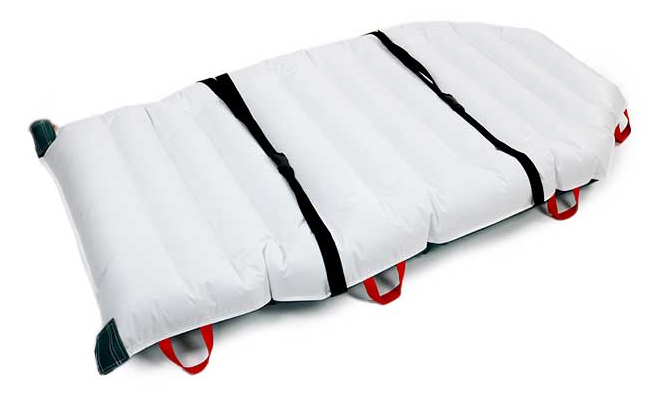Patient transfers are a routine yet critical aspect of healthcare. Moving patients safely and efficiently is paramount for both patient well-being and caregiver health. Traditional manual patient handling methods often pose significant risks, including musculoskeletal injuries for caregivers and discomfort or even injury for patients. Air transfer mattress technology offers a revolutionary solution to these challenges. This post will explore how air transfer mattresses are transforming patient transfers, enhancing both safety and efficiency in healthcare settings.
1. The Challenge of Traditional Patient Transfers
Manual patient handling, without assistive devices, can be physically demanding and risky. Caregivers frequently face:
- High Physical Strain: Lifting, pulling, and repositioning patients puts significant strain on caregivers’ backs, shoulders, and joints, leading to a high risk of musculoskeletal injuries, a leading cause of workplace absence in healthcare.
- Patient Discomfort and Injury Risk: Manual handling can cause friction and shear forces on the patient’s skin, leading to discomfort, bruising, and pressure ulcers, especially for vulnerable patients with fragile skin or limited mobility.
- Inefficiency and Time Consumption: Traditional methods can be time-consuming and often require multiple caregivers, impacting workflow efficiency, especially in busy environments like hospitals and emergency rooms.
- Risk of Falls: Lack of secure and controlled movement during manual transfers increases the risk of patients falling or being dropped, resulting in serious injuries and complications.
2. Air Transfer Mattress Technology: A Safer and Smarter Approach
Air transfer mattress technology provides a vastly improved alternative to manual lifting. The core principle revolves around air flotation, creating a near-frictionless surface that allows for smooth and effortless patient movement. Key technological features include:
- Air Flotation System: The mattress inflates with air, creating a cushion of air beneath the patient. This air cushion minimizes contact and friction between the mattress and the supporting surface.
- Perforated Bottom Surface: The mattress features a subtly perforated **bottom surface** that evenly distributes air, ensuring consistent flotation and smooth gliding.
- Durable and Comfortable Materials: Constructed from robust yet comfortable materials like polyurethane or nylon, air transfer mattresses are designed for repeated use while prioritizing patient comfort and skin integrity.
- Controlled and Stable Transfer: The air-assisted system allows caregivers to guide and control patient movement with minimal force, ensuring a stable and predictable transfer process.
- Easy Operation and Deflation: Air transfer mattresses are typically user-friendly, with simple inflation/deflation mechanisms for quick setup and storage, contributing to efficient workflow.
3. Enhancing Safety in Patient Transfers
Safety is paramount in healthcare, and air transfer mattress technology significantly enhances safety for both patients and caregivers:
- Reduced Caregiver Injuries: By minimizing manual lifting and exertion, air transfer mattresses drastically reduce the risk of back injuries and musculoskeletal disorders among healthcare staff, promoting a healthier and more sustainable workforce.
- Minimized Patient Injury Risk: The smooth, gliding transfer reduces friction and shear forces, protecting patient skin and minimizing the risk of bruising, skin tears, and pressure ulcers.
- Fall Prevention: The controlled and stable nature of air-assisted transfers minimizes the risk of accidental drops and falls during patient movement, enhancing patient security and well-being.
- Improved Patient Dignity: Gentle and dignified transfers contribute to a more positive patient experience and respect their comfort and privacy during necessary movements.
4. Boosting Efficiency in Healthcare Workflows
Beyond safety, air transfer mattress technology also contributes significantly to workflow efficiency:
- Faster Transfer Times: Air-assisted transfers are typically quicker and smoother than manual methods, saving valuable time in busy healthcare settings, especially in emergency departments and operating rooms.
- Reduced Staffing Needs: Often, patient transfers with air mattresses can be performed with fewer caregivers compared to traditional methods, optimizing staff utilization and resource allocation.
- Streamlined Processes: The ease of use and quick setup of air transfer mattresses streamline patient handling procedures, contributing to a more efficient and organized workflow throughout the facility.
- Increased Throughput: Faster and more efficient transfers can contribute to improved patient throughput, allowing healthcare facilities to manage patient flow more effectively, particularly in high-demand areas.
5. Applications Across Healthcare Settings
Air transfer mattress technology is versatile and applicable across a wide range of healthcare environments:
- Hospitals (Medical-Surgical Units, ICUs, ORs): For lateral transfers, repositioning, and transfers to and from operating tables and imaging equipment.
- Long-Term Care Facilities and Nursing Homes: For safe and frequent repositioning and transfers of residents with limited mobility, reducing caregiver strain and preventing pressure ulcers.
- Rehabilitation Centers: For facilitating safe transfers during therapy sessions and promoting patient participation in rehabilitation programs with reduced risk of injury.
- Home Healthcare: To assist home caregivers in safely moving patients with mobility limitations within the home environment, making home care more manageable and sustainable.
- Emergency Medical Services (EMS): For rapid and secure patient transfers in emergency situations, in ambulances and emergency rooms, where time and safety are critical.
6. Conclusion: Investing in Safety and Efficiency with Air Transfer Mattresses
Air transfer mattress technology represents a significant advancement in patient handling. By prioritizing safety, reducing caregiver strain, and enhancing efficiency, these devices offer a clear advantage over traditional manual methods. For healthcare facilities seeking to improve patient care, optimize workflow, and protect their staff, investing in and implementing air transfer mattress technology is a strategic and impactful decision. It’s not just about adopting new equipment; it’s about fostering a safer, more efficient, and more compassionate healthcare environment for everyone involved.

